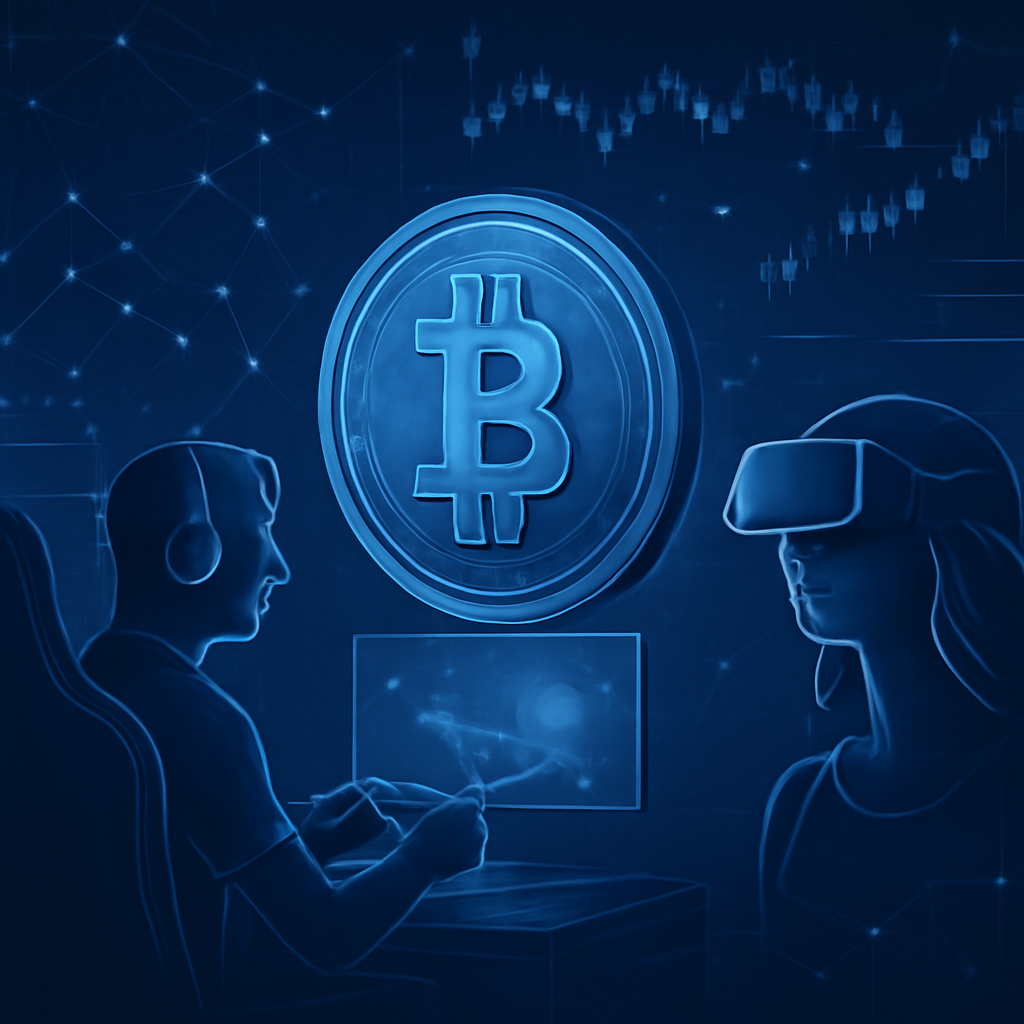The convergence between cryptocurrency and the gaming industry is rapidly reshaping the landscape of digital entertainment and investment. As of early 2024, the global gaming industry boasts a market capitalization of approximately $220 billion, while the cryptocurrency market has seen a resurgence, with a total market cap around $1.1 trillion. This represents a renewed interest and growth trajectory, particularly since the downturn experienced in 2022. Both sectors are projected to grow at an annual rate of around 10% to 12% through 2025, driven by innovations in blockchain technology and shifts in consumer behavior towards decentralized platforms.
Notable developments in blockchain gaming platforms are exemplified by projects such as Axie Infinity, which has experienced a resurgence in user engagement through enhanced gameplay mechanics and tokenomics. Similarly, Decentraland continues to expand its virtual real estate marketplace, attracting both gamers and investors alike. The play-to-earn (P2E) model has emerged as a significant disruptor, allowing players to earn crypto assets through gameplay, fundamentally altering traditional revenue streams for game developers. In 2023 alone, P2E platforms garnered over $1 billion in revenue, showcasing a paradigm shift in how gaming economies function.

User demographics indicate a substantial shift towards younger, tech-savvy players actively engaging with blockchain technologies. Recent studies show that approximately 30% of players aged 18-34 are now involved in crypto-integrated games, with a notable concentration in regions like Southeast Asia and Eastern Europe. These players are not only more likely to spend on in-game assets but also exhibit increased loyalty to platforms that offer crypto rewards. Insights into spending habits reveal that crypto gamers typically invest 20-30% more in in-game purchases compared to traditional gaming, driven by the perceived value of earning rather than merely spending.
The technical landscape of crypto assets in gaming ecosystems has seen the emergence of several prominent tokens, with Decentraland's MANA, The Sandbox's SAND, and Axie Infinity's AXS leading the charge. As of Q1 2024, MANA is trading at approximately $0.70, SAND at $0.65, and AXS at $12.50, each demonstrating varying degrees of volatility and liquidity. MANA and SAND have exhibited price correlations with Bitcoin, reflecting broader market trends; when Bitcoin fluctuated by 10% in Q4 2023, MANA and SAND responded with an average change of 8%. This correlation underlines the interconnectedness of these markets and the inherent risks tied to BTC’s volatility.

The underlying blockchain technology in gaming ecosystems is pivotal for scalability and user experience. Ethereum remains the dominant player, but Layer-2 solutions such as Polygon have gained traction, significantly enhancing transaction speeds and reducing costs. For instance, Polygon has reduced gas fees by over 90% compared to Ethereum’s mainnet, enabling a smoother gaming experience that attracts more users. Furthermore, the interoperability of assets across various gaming platforms is becoming a crucial factor, with projects like Immutable X leading the charge in enabling seamless asset transfers. Such advancements not only enhance user engagement but also create a robust framework for asset valuation in gaming economies.
Current market sentiment towards gaming cryptocurrencies reflects a cautious optimism, bolstered by social media analytics and community engagement data. Platforms like Twitter and Discord have become vital for gauging sentiment, with positive discussions surrounding new game releases and technological advancements driving up interest in associated tokens. Historical sentiment analysis indicates that during the bull run of early 2023, gaming tokens experienced an average price increase of 150%, showcasing their potential for rapid appreciation in favorable market conditions. Community-driven initiatives and decentralized autonomous organizations (DAOs) are also influencing market perceptions, as they foster a sense of ownership among players and investors alike.

Investment trends in the gaming crypto sector are witnessing significant momentum, with funding rounds for gaming projects reaching nearly $3 billion in 2023, a 50% increase from the previous year. Successful token launches, such as Illuvium and The Sandbox, have delivered impressive returns, with Illuvium appreciating by over 200% since its launch. Regulatory developments are a double-edged sword; while they instill investor confidence, uncertainty surrounding compliance can lead to market volatility. Stakeholders are advised to monitor regulatory news closely, as it can significantly influence investment decisions and sentiment.
Institutional investment in gaming-related cryptocurrencies is on the rise, with hedge funds and venture capital firms increasingly allocating resources towards blockchain gaming initiatives. Notably, platforms like Galaxy Digital have reported a 40% increase in investments in gaming crypto assets in 2023. Exchange-traded funds (ETFs) that include gaming-related cryptocurrencies have also gained traction, with the Amplify Transformational Data Sharing ETF (BLOK) showing robust performance, up 25% year-to-date. Partnerships between traditional gaming firms and crypto projects, such as Ubisoft’s collaboration with Tezos, are indicative of a growing acceptance of blockchain technology within the gaming sector.

For institutional investors, engaging with digital assets requires robust custody solutions and adherence to regulatory compliance. Best practices include employing third-party custodians for digital assets and ensuring a comprehensive understanding of the regulatory landscape. Risk management strategies are paramount, especially in a market characterized by high volatility and rapid technological evolution. Insights from industry leaders suggest that a diversified portfolio that includes exposure to emerging gaming technologies can mitigate risks while capitalizing on growth opportunities.
Looking ahead, market projections for cryptocurrency in online gaming and the metaverse are promising, with estimates suggesting a market size of over $400 billion by 2025. Emerging technologies, including virtual reality (VR) and augmented reality (AR), are expected to enhance user experiences and drive crypto integrations. However, challenges remain, including regulatory hurdles that could stifle innovation, technological limitations that necessitate scalable solutions, and a saturated market where competition among gaming platforms intensifies.

For institutional investors, strategic considerations should focus on diversifying portfolios with gaming cryptocurrencies as a hedge against traditional market risks. Key indicators to monitor include player adoption rates, regulatory developments, and technological advancements within blockchain gaming ecosystems. By staying informed and agile, investors can position themselves favorably in this dynamic and rapidly evolving sector.
